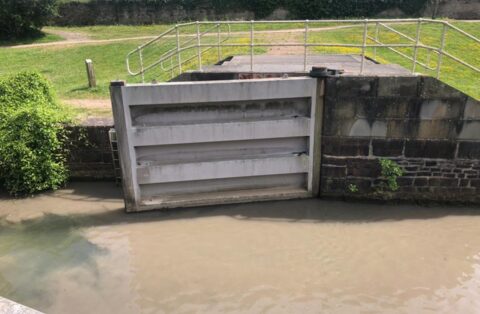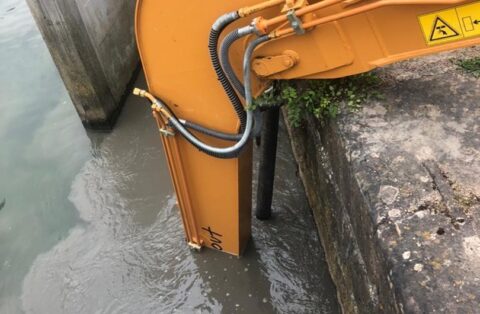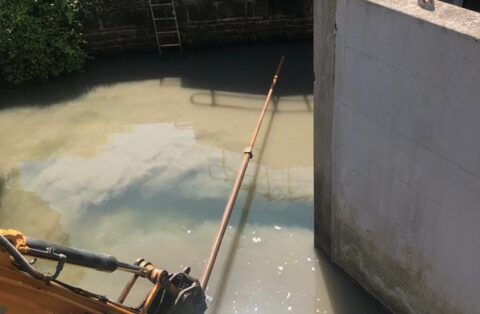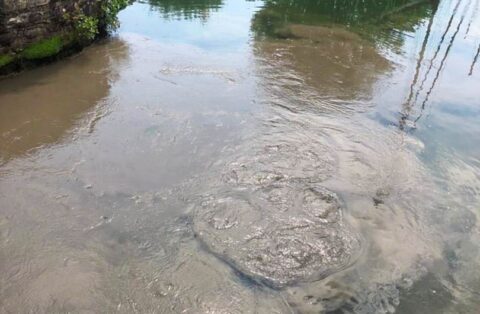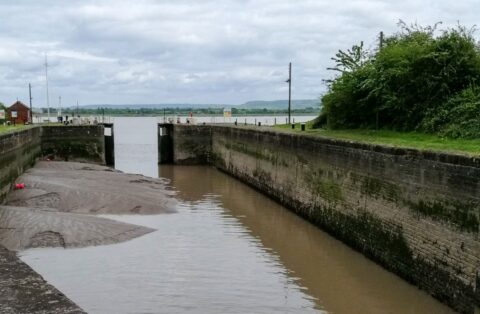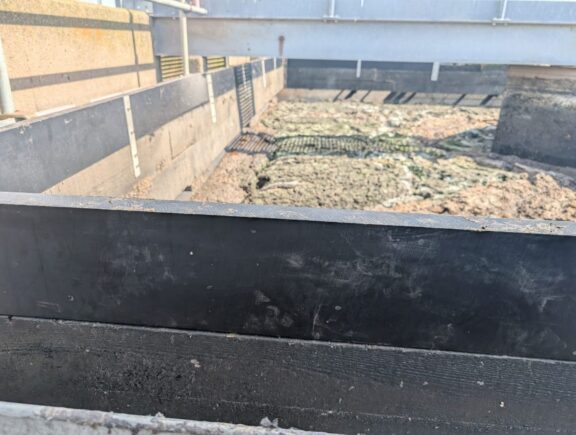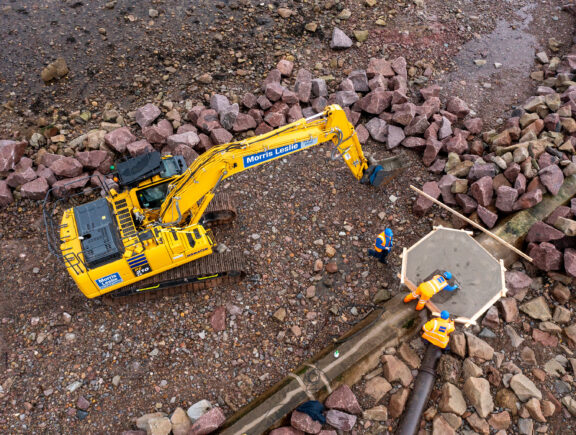Due to the depth of the lock and the large tidal range, various methods of access were proposed including divers, a barge, and a long reach excavator. After consideration, Stonbury chose to work from the bank, laying timber crane mats for the excavator and pumps, which were located a safe 10 metre distance from the lock.
Stonbury fabricated a large innovative jetting nozzle, coupled to a pump designed to deliver up to 100 litres of water per second, mounted on a long-reach excavator to agitate the silt and blast it away from the area surrounding the floodgates. This method avoided digging and removal and therefore negated the requirement for a Marine Management Organisation (MMO) permit.
During incoming tides, the pump and excavator combination was used to break up heavy deposits and mobilise the sediment into suspension, whilst the gates were repeatedly exercised to ensure all silt was moved. During outgoing tides, using the gate paddles on the lower lock gates, water was bled past the works to carry the silt into the River Severn (with MMO approval). Once gates were operational, the lock chamber was flushed.
Due to the public location of the work, Stonbury displayed project information notices on fencing around the site communicating the problem, solution and timeframe, and the site team took time to explain the proceedings to members of the public when it was appropriate.
Coordinating closely with the EA Harbourmaster and client team, all works were successfully completed according to the original plan within an agreed timeframe of three weeks and with no safety incidents or environmental concerns.

